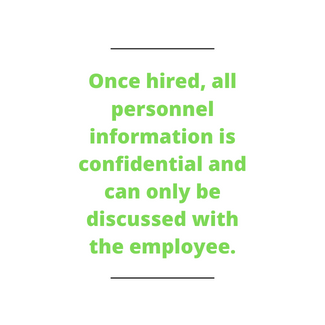Management: Nightmare HR Stories And Lessons To Learn From Them

Fall is here, the time of year people gather around and tell each other scary stories. Unfortunately, the workplace has its fair share of all-too-real horror stories too.
By bringing them to light, we hope they can become important lessons on what to do and not do.
Trick-or-Treat
Knowing that his Kentucky company celebrates staff birthdays, an employee asked the office manager to not throw him a party. However, the office manager did not pass along the request and, while he was away, co-workers planned a birthday celebration for the employee. The employee then suffered a panic attack, so he avoided the party and sat in his car during the lunch break.
The next day, two supervisors confronted him about his behavior, which prompted him to have another panic attack, turn red in the face and yelling at his supervisors to be quiet. The employee used a coping method which involved clenching his fists, causing the supervisors to feel threatened, so they sent him home and told security to not allow him back.
Even though the employee texted apologizing for his behavior and explained it was how he copes with panic attacks, the company fired the employee, citing fear of physical harm and that his panic attacks did not meet the ADA-level of disability.
The employee filed a claim for adverse employment action due to his disability. A jury agreed and awarded him $150,000 in lost wages and $300,000 for his suffering.
Moral of the story: Honor an employee’s request to not be involved in company traditions or public outings that are not directly related to their job duties.
Ghosted
There are numerous stories of potential and current employees ghosting their employers.
All I’m saying is if you’re getting ghosted by employees...it’s not them.
— Scafe says wear a gd mask (@erinscafe) December 12, 2018
It’s you. pic.twitter.com/905Qs1NZmW
Applicants fail to respond to interview requests or candidates who have been interviewed or even offered a job disappear with no warning. Even current employees, regardless of length of service, have been known to work without issues and then poof… without warning they do not show up to work, do not call in, and do not respond to managers who reach out not only to find out if they are coming in but if they are OK.
Conversely, several companies have ghosted job candidates as well. Even though recommended practice, not every application gets acknowledged or sent a rejection letter early in the hiring process. However, companies have been known to interview candidates, promise follow-up, and even make a preliminary offer of employment but then never contact that candidate again.
Moral of the story: Establish clear communication expectations for every stage of the hiring process and employment lifecycle. Let candidates and employees know that they are valued and who and how to reach out to communicate any issues they have. And be sure to have a welcoming, open communication style so people do not feel disappearing is their only option.
Mummies
A recruiter had an interview with a 19-year-old man for a summer internship. While it seemed to be a normal interview, the young man’s mother appeared a few minutes later apologizing for being late as she was parking the car. The mother then joined the interview, continually interrupting to extoll her son’s accomplishments and explain why the company should hire him. In fact, there are numerous stories of parents involving themselves in the hiring process for their children, including submitting their child’s resume on their behalf, asking to represent them in the interview since their child was “busy,” or calling to negotiate a higher salary.
In fact, there are numerous stories of parents involving themselves in the hiring process for their children, including submitting their child’s resume on their behalf, asking to represent them in the interview since their child was “busy,” or calling to negotiate a higher salary.
Moral of the story: Be prepared for outsiders intruding into the process. Calmly and respectfully explain to both the child and their parent that the hiring process is an interaction between the company and the applicant which is best one-on-one. Once hired, all personnel information is confidential and can only be discussed with the employee.
Not A Costume
Companies often have dress and appearance requirements, some due to safety purposes while others are to achieve the desired “look” the company wants its employees to present. The EEOC protects the employee’s rights to follow the attire and/or appearance requirements dictated by their religious beliefs.
However, companies often enforce their requirements for all employees without making reasonable allowances such as skirts for women who are not allowed to wear pants or not hiring a woman who wore a headscarf to an interview (whose case was actually affirmed by the Supreme Court).
Companies have had to pay large settlements due to not giving employees who wear beards and long hair the same employment and promotion opportunities. While some requirements do not need to be accommodated due to critical factors such as safety as long as enforced consistently for all employees (i.e., not allowing a firefighter to grow a religiously-required beard because it would cause his life-saving mask to no longer fit properly), many dress codes allow for some flexibility.
Moral of the story: Review your dress code to evaluate its requirements for “wants” versus “needs.” If an employee makes an accommodation request for any legitimate reason such as medical or religious requirements, consider if the appearance policy can be flexed to honor the employee’s rights while maintaining safety and keeping the general “look” desired.
HR does not have to be scary, and you do not need to face your fears alone. Reach out to Affinity HR Group to help you navigate the “horrors” you may face.
McAllister is a contributor for Affinity HR Group, PPAI’s affiliated human resources partner. Affinity HR Group specializes in providing human resources assistance to associations such as PPAI and their member companies. To learn more, visit www.affinityHRgroup.com.

